#XB hardtop
Photo
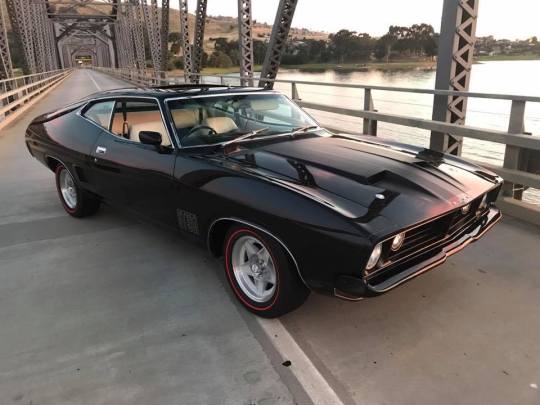



#falcon gt#falcon#ford#xbgt#xb#gt#xb falcon#xb hardtop#xb coupe#falcon hardtop#hardtop#falcon coupe#coupe#2 door hardtop#ford gt#muscle car#muscle cars#musclecar#musclecars#australian muscle#muscle#touring car#bathurst#kustom kulture#kustomblr#kustom#custom#custom car#classic#classic car
1K notes
·
View notes
Text

#interceptor#pursuit special#madmax#mad max#falcon#XB#XB falcon#XB hardtop#falcon hardtop#hardtop#falcon coupe#coupe#muscle car#muscle cars#musclecar#musclecars#wasteland vehicles#apocalypse#apocalyptic#dystopia#dystopian#postapocalypse#postapo#postapocalyptic#postapoc#fantasy#wastelands#wasteland#scifi#fallout
682 notes
·
View notes
Photo

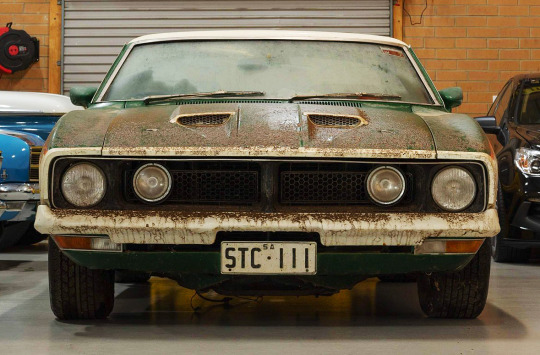
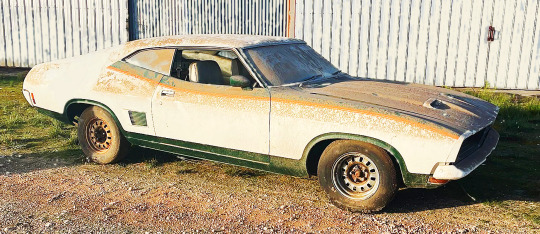


Ford Falcon John Goss Special, 1975. A rare example of a special edition that was created to commemorate John Goss's win in the 1974 Bathurst 1000 endurance race, has been uncovered in a South Australian farm shed. The cars were based on the XB series Falcon 500 Hardtop with a 302ci Cleveland V8 and were all finished in polar white with contrasting accent colours in Apollo Blue metallic or Emerald Fire (green) metallic. The example which has been discovered has green accents and was apparently last driven in 1988. A restored John Goss Special recently sold for AU$250,000 ($172,000).
sales listing
#Ford#Ford Falcon#Ford Falcon XB#Ford Falcon John Goss Special#1975#special edition#barn find#unrestored#restoration project#Ford Falcon Hardtop#pillarless hardtop#pillarless coupé#1970s#Ford Australia#John Goss#302ci V8#Cleveland V8#dusty
250 notes
·
View notes
Text
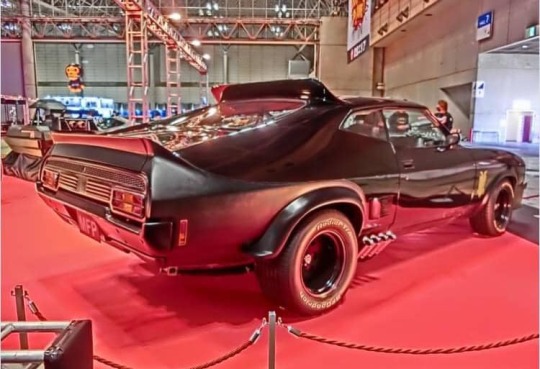
Mechanic : The last of the V8 Interceptors... a piece of history!
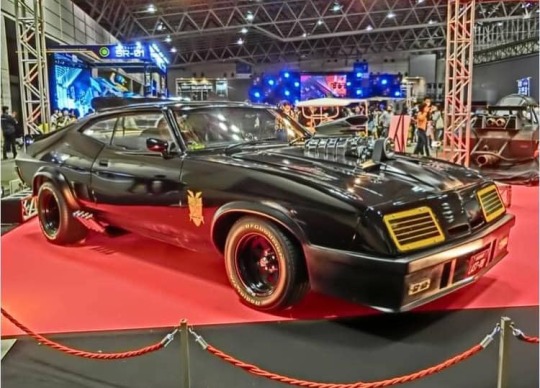
Mechanic : Would've been a shame to blow it up.

The Pursuit Special, also referred to as the Last of the V8 Interceptors, is the iconic black GT Falcon muscle car featuring a distinctive supercharger driven by the title character Mad Max during much of the Mad Max franchise, where it appears in Mad Max, Mad Max 2: The Road Warrior and in Mad Max: Fury Road, as well as both video games.

The first car shown in the film with the title of Pursuit Special is a 1972 HQ Holden Monaro[V8 coupe stolen by Nightrider (played by Vince Gil), an escaped cop killer, who dies in an accident that destroys the vehicle. The more famous Pursuit Special is a heavily modified Ford Falcon XB GT, built on a vehicle originally assembled stock at the Ford plant in November 1973. Maxwell "Mad Max" Rockatansky (Mel Gibson) is offered the black Pursuit Special, as an incentive to stay on the force as their top pursuit man after he reveals his desire to resign. Although Max turns the offer down, he later uses the black car to exact his revenge on an outlaw motorcycle gang who killed his wife and son.

The vehicle started out as a standard white 351 cu in (5.8 L) Australian built 1973 Ford Falcon XB GT Hardtop when in 1976, filmmakers Byron Kennedy and George Miller began preproduction on Mad Max. The movie's art director Jon Dowding designed the Interceptor and commissioned Melbourne-based car customizers Graf-X International to modify the GT Falcon. Peter Arcadipane, Ray Beckerley, John Evans, and painter Rod Smythe transformed the car as specified for the film.

The main modifications are the black paint scheme, roof and boot spoilers, wheel arch flares, and front nose cone and air-dam designed by Arcadipane (marketed as the "Concorde" style). Also, eight individual exhaust side pipes were added (only two of them being functional, others appeared to be working because of the vibrations the first two created). The most famous feature of the car is a Weiand 6-71 supercharger[5] protruding through the bonnet. The impressive looking supercharger, in reality, was nonfunctional; functional superchargers are typically driven constantly by the engine and cannot be switched on and off, as portrayed in the first two Mad Max films.
1973 Ford XB Falcon GT 351
Pursuit Special, when the term is used, generally refers to Max's more famous V8 Interceptor Pursuit Special, a 1973 Ford XB Falcon GT 351, commissioned at great expense by Police Commissioner Labatouche and the Main Force Patrol's (MFP) commander, Fifi Macaffee.
#car#cars#muscle car#american muscle#Ford XB Falcon GT 351#Ford XB Falcon GT#Ford XB Falcon#Ford XB#Ford#mad max#the road warrior#road warrior
77 notes
·
View notes
Photo





Stuart Gary’s Superbird and the need for speed A long time ago in a galaxy far, far away I dreamed of owning a Falcon GT hardtop just like the one my childhood hero Allan Moffat raced at Bathurst. Eventually, I bought an old rust ridden 1976 XB orange Ford Fairmont GS and slowly rebuilt it into my dream car – sort of like the black Falcon Interceptor out of Mad Max. Instead of a supercharger (which was fake in the movie car anyway) my car is equipped with a genuine 1000 hp twin turbocharged 351 under the hood. I often drove this beast from Sydney to Darwin when I was working as a radio broadcaster and journalist at 8DN. It was my daily ride for the commute from the suburbs to the city when I moved to 3UZ in Melbourne. And I got a great shot of it next to Brocky’s 05 Commodore when it was on display in Newcastle while I was working for the ABC at 2NC. Mind you this was always a thirsty beast – just four miles per gallon on the old scale -- a run from Newcastle to Sydney required two tanks of fuel! The heart of the beast is a specially built engine originally put together by Bob Matic at Ford Muscle Parts and later further modified by Ian Benson at Benson's Turbos. For the technically minded, the 351 Cleveland V8 powering the beast is fully blue printed, shot peened, and micro-polished. It’s based around a four bolt Aussie block fitted with 4V O-ringed open chambered BOSS heads, twin TO4 Garrett air-research turbo chargers with 21-pound wastegates, turbo dish pistons, Carrillo alloy rods, stainless steel crank, and a windage tray sump. It uses a three-inch stainless-steel twin exhaust system. The block is cooled by a four-core radiator and there's a separate radiator for the gearbox oil. Those thousand ponies are fed through a 12 inch drag clutch and four speed top loader gearbox to a custom-made drive shaft and GTHO yoke, into a nine-inch LSD and 35 spline rear axles. The Falcon is totally street legal with an engineer’s certificate to prove it. I also own a De Tomaso Pantera, but the two cars are totally different. While the Falcon has a deep throated thunderous growl, rumbling like the approaching storm it is - the Pantera has a short loud bark. The Pantera is very fast off the line (0 to 100 in around 3 seconds) and amazingly nimble -- even twitchy through the corners. But it holds on to the road as if attached to guide rails all the way to its top speed of over 300 KPH. On the other hand, the Falcon is a very different beast. It’s much slower off the line, with those turbos taking a while to spin up to boost. But once that turbo whistle starts, you’re suddenly thrust backwards into your seat and the beast hunkers down and begins accelerating like a bat out of hell -- easily slipping beyond the old 200 MPH mark (320 KPH) as the world outside flashes past. The beast eventually tops out at just over 342 KPH – close enough to warp speed for anyone. It’s a true adrenaline pumping rush taking you to the edge and beyond. Yet, it all changed once I started taking flying lessons. Flying aircraft is a totally different world. Looking down from above, life at ground level suddenly seemed so limiting and two dimensional. I still own both cars – but seldom drive them.
#muscle car#ford#aussie muscle cars#car#interceptor#madmax#australian muscle#falcon#falcongt#falconcoupe#falconhardtop#xb#classic cars#classic muscle#xbfalcon#kustom kulture#custom car#street machine#detomaso#pantera#de tomaso pantera#gtho#falcongtho#phase4
12 notes
·
View notes
Text

#falcon#ford#XB falcon#muscle car#muscle cars#musclecar#musclecars#australian muscle#XB hardtop#XB coupe#XB#classic#classic car#classic cars#kustom kulture#kustomblr#kustom#custom#car#cars#australian musclecar#australian muscle car
181 notes
·
View notes
Photo

Ford Falcon XB Hardtop
via reddit
31 notes
·
View notes
Photo

Just #stalking #falcongt #xb #xc #hardtop #fordcars #fordfalcon #351gt #hdr_transports #fx_hdr #ontheroad #carstalker #cargram #carsofinstagram #mextures #photolabapp #11pro #appleiphone11pro #edit (at Pearcedale, Victoria) https://www.instagram.com/p/B5wLHY9AXAt/?igshid=186yv0mj7jnt8
#stalking#falcongt#xb#xc#hardtop#fordcars#fordfalcon#351gt#hdr_transports#fx_hdr#ontheroad#carstalker#cargram#carsofinstagram#mextures#photolabapp#11pro#appleiphone11pro#edit
0 notes
Text

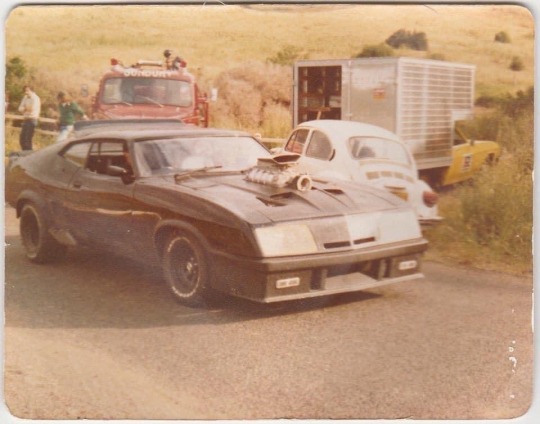


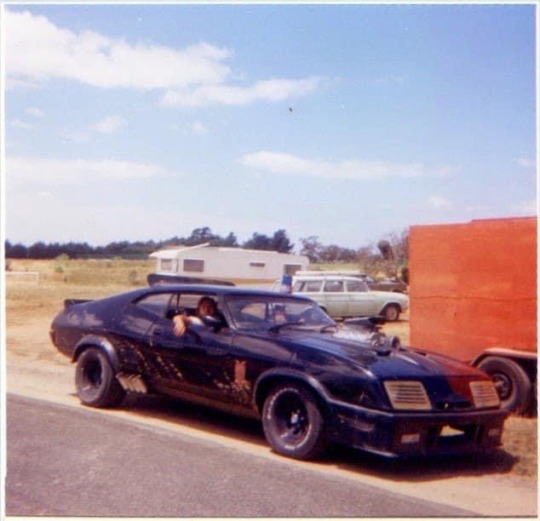

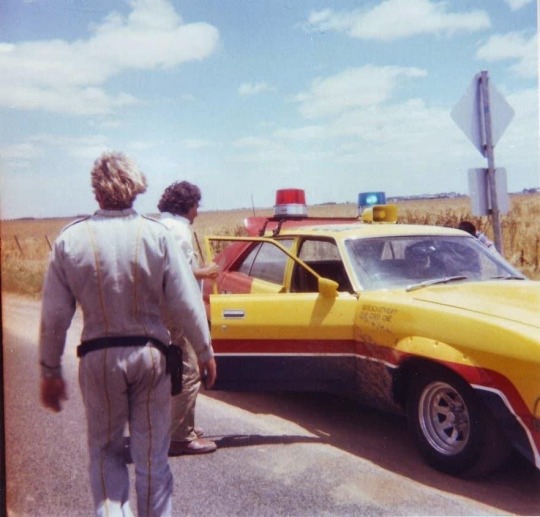
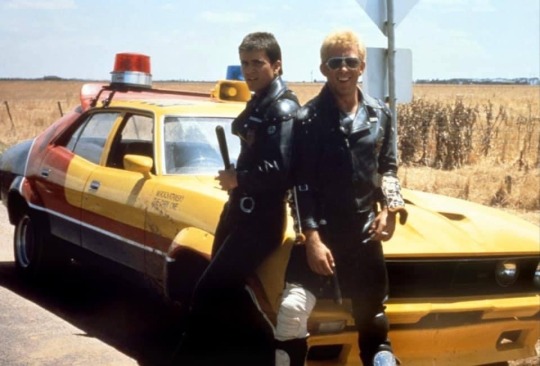
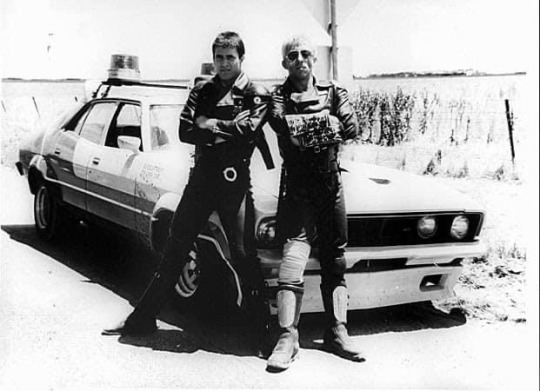

On the set of Mad Max in western Victoria
#interceptor#madmax#falcon#ford#hardtop#coupe#muscle car#muscle cars#musclecar#musclecars#australian muscle#australian musclecar#XBGT#XB#GT#XB falcon#GT falcon#XB hardtop#XB coupe#landscape#landscape photography#car#cars#australia#1970s#1970s aesthetic#70s aesthetic#70s#aesthetic#aesthetics
602 notes
·
View notes
Text

#interceptor#madmax#mad max#falcon#ford#XB falcon#hardtop#coupe#XB#muscle car#muscle cars#musclecar#musclecars#wastelands#wasteland#apocalypse#apocalyptic#postapocalypse#postapocalyptic#postapo#postapoc#dystopia#dystopian#fantasy#doomsday#preppers#bugoutbag#bugout#postnuclear#wasteland vehicles
1K notes
·
View notes
Text


Ford Falcon XA GT 351 Hardtop, 1972. Also powered by Ford's Cleveland V8 that was imported for the US for the otherwise all-Australian Falcon. In the XA GT it made 300hp. The Cleveland-powered GT only made through one further generation, the XB, before it was discontinued.
#Ford#Ford Falcon#Ford Falcon GT#Ford Falcon GT 351#Ford Falcon XA GT 351 Hardtop#1972#Cleveland V8#351ci V8#1970s#pillarless hardtop#Ford V8
207 notes
·
View notes
Photo

1975 XB Ford Falcon GT Hardtop Coupe 351 V8. Pencil on canvas by Wayne Sotogi - Gold Coast
9 notes
·
View notes
Text

FORD TORINO GT
Walking around a 1970/71 SportsRoof Torino at a classic car show in the States could be a confusing experience for Ozzie Ford enthusiasts. They might well be wondering, ‘Have I come all this way to look at a customised XA-XC Falcon hardtop?’ And for good reason.
When Ford Australia’s designers and engineers first sat down with blank sheets of paper in 1968 to come up with an all-new Falcon for 1972, the brief required them to make a comprehensive break from past styling. The boxy Falcon XY shape was to make way for the organic flowing look we became familiar with in the XA model and the subsequent XB and XC updates. At that time the Torino team at Dearborn was a couple of years ahead of Ford Australia in making a similar transition to a sleeker body style. No surprise then that the Ford Australia team made a conscious decision to draw on the second-generation Torino concept for some XA design elements. The decision was a no brainer. Why put in the effort and take on the costs of the pioneering stage of developing a new model when your corporate cousins have already done those hard yards?

Perhaps I’m not alone in admitting that the Torino made only a smallish blip on my Ford-model radar over the years. My excuse is that from an Australian perspective at least the Torino existed largely in the shadow of its high-profile stablemate, the Mustang.
This relative anonymity is surprising when you consider the Torino’s exposure on screens large and small over the decades. While the Gran Torino model got excellent exposure in the Starsky and Hutch TV series in the 70s and 80s and the later movie, its starring role in Clint Eastwood’s perfectly named 2008 movie, Gran Torino. capped off its profile raising. After seeing that movie you had a pretty good handle on what at least one classic Torino – the 1972 Gran Torino Sport – was all about. But there’s way more to the Torino story than was revealed by its '15 minutes of (TV/movie) fame'.

The Torino was launched in 1968 as an upmarket, upsized addition to the US Fairlane range. Naming it after Italy’s Motown was an interesting, but not ground-breaking move for Fomoco, with models like Capri, Montego and Granada also honouring various geographical locations. I'm not too sure, though, that a generously sized Torino would be my first choice for navigating the often narrow and crowded confines of its namesake city’s streets.
The Torino’s arrival relegated Fairlane-badged cars to entry-level status in Ford’s intermediate-category (US) line-up – a point underlined by Fairlane's sharing a number of panels with the utilitarian Ranchero pickup. Ultimately the Fairlane name was dropped from what had become the Torino model-range, bizarrely at the time when the Australian Fairlane was just hitting its straps as a desirable aspirational model with a long profitable future ahead of it for Ford Australia.
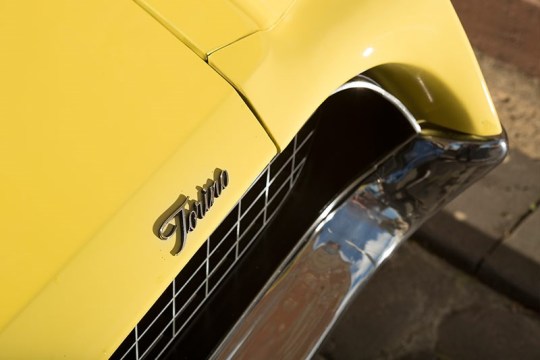
The Torino covered most model-variant bases with two four-door sedans, a two-door hardtop, even a Squire wagon, as well as Torino GT versions that also included a convertible. While base-line Torinos initially offered a 200ci in-line six as standard, V8 options included the 302ci, two versions of the 390ci and some months into the 1968 model year the 428ci Cobra-Jet was added to the motor menu to give credibility to the GT version's claim to 'Muscle Car' status.
The fresh styling of the second-generation Torino of 1970/71 we opened with was widely praised by the American motoring media. New engines included the 351ci Cleveland and buyers really wanting to burn some bitumen could opt for the Torino Cobra, powered by the legendary Cobra-Jet 429, a purpose-built hi-po engine that claimed an impressive 370 horsepower. Healthy Torino sales continued to produce smiles in Ford’s executive suite.
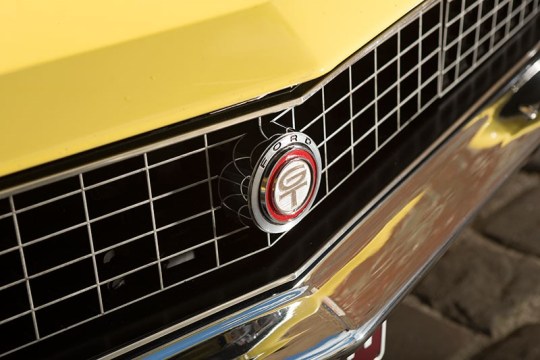

By 1972 with the 'Muscle Car' era fading to grey in the US, the GT label was dropped in favour of the blander ‘Gran Torino Sport’ label. These larger third-generation Torinos moved from the previous car’s taut ’n' terrific unitary construction, in favour of heavier body-on-frame construction. The Torino’s high-performance glory days were now fading fast.
Further evolution through to 1976, the Torino’s finale model, produced successively more laid-back Torinos – a process that for performance fans provided a grim contrast with the early Torino Cobras that had proudly flown the Ford flag in NASCAR racing.


Ford's Torino made a great start in 1968 by selling more than 100,000 units into a market begging for affordable ‘muscle’ cars. 1969 saw numbers dip by half but then recover. Entering the 1970s, sales were averaging above 60,000 annually. Lots of GT Torinos have been preserved or restored so there remains a deep pool into which buyers can dip to find decent cars.
Scarce variations including the 429 Cobra-Jet and Talladega occasionally top six figures in US sales but aren’t as yet totally out of reach.

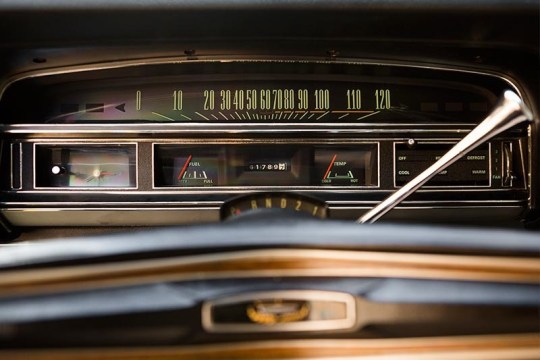

The minimum specification a Torino buyer should consider while remaining credible is an M-Code with 5.8 litres and automatic transmission. These were built from 1970-72 and a few did come to Australia. Importing a decent car today will cost $45-55,000.
Seeking out a 6.4 or even 7.0-litre (390 or 428 cubic inch) GT will more seriously dent the balance. However they generally cost less than similar-looking XA-XB Falcon GT Hardtops.
Deep pockets and due diligence come to the fore when your target is an R-Code Cobra. Genuine, number-matching cars in close to showroom order (plus the cost of freighting and registering upon arrival) will top A$100,000.


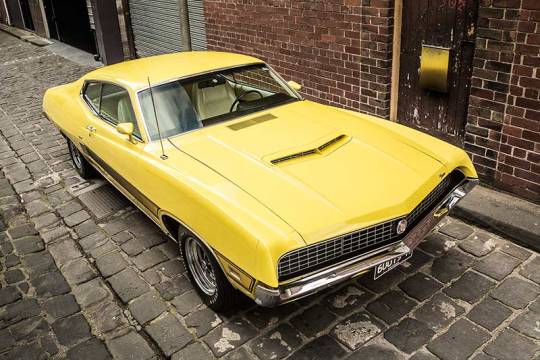


VALUE RANGE:
1968-72 Ford Torino
Fair: $24,500
Good: $48,000
Excellent: $65,000 (GT390)
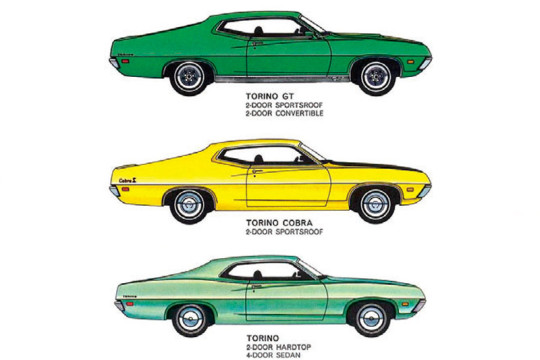
49 notes
·
View notes
Text
Motor Vehicles
Yoruichi owns a small stable of motor vehicles. It should be noted that all of them have been heavily customized from their stock specs and often feature entirely new internals and interiors. The paint jobs and wheel rims of the examples below are not necessarily illustrative of her cars either historically or at the current moment. As of 2022, all vehicles except the Chieftain and Falcon have a black and red paintjob similar in feel to the reveal of the Aston Martin Valkyrie.
1967 Ford GT40 Mk. II B

1973 Ford Falcon XB GT Hardtop (Pursuit Special)

1985 Leyland FV4201 Chieftain Mk. 11

1986 De Tomaso Pantera GT5-S

1997 Mazda RX-7 FD (VeilSide Fortune Body Kit)

2002 Nissan Fairlady Z33 (350Z) (VeilSide Ver. III Body Kit)

2004 Yamaha YZF1000R Thunderace

2012 Yamaha YZF-R1 (supercharged)
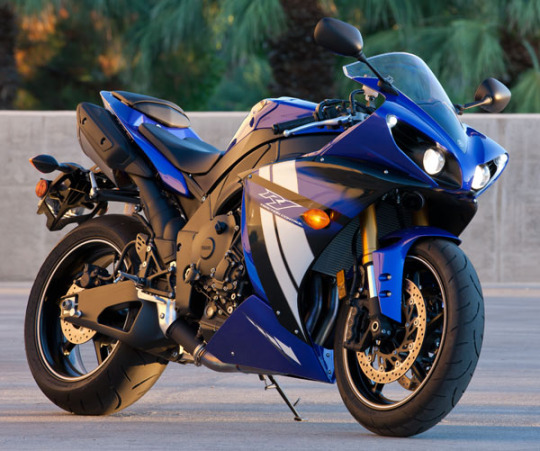
2015 Dodge Challenger SRT Hellcat

2020 Honda CBR1000RR Fireblade (supercharged)

4 notes
·
View notes
